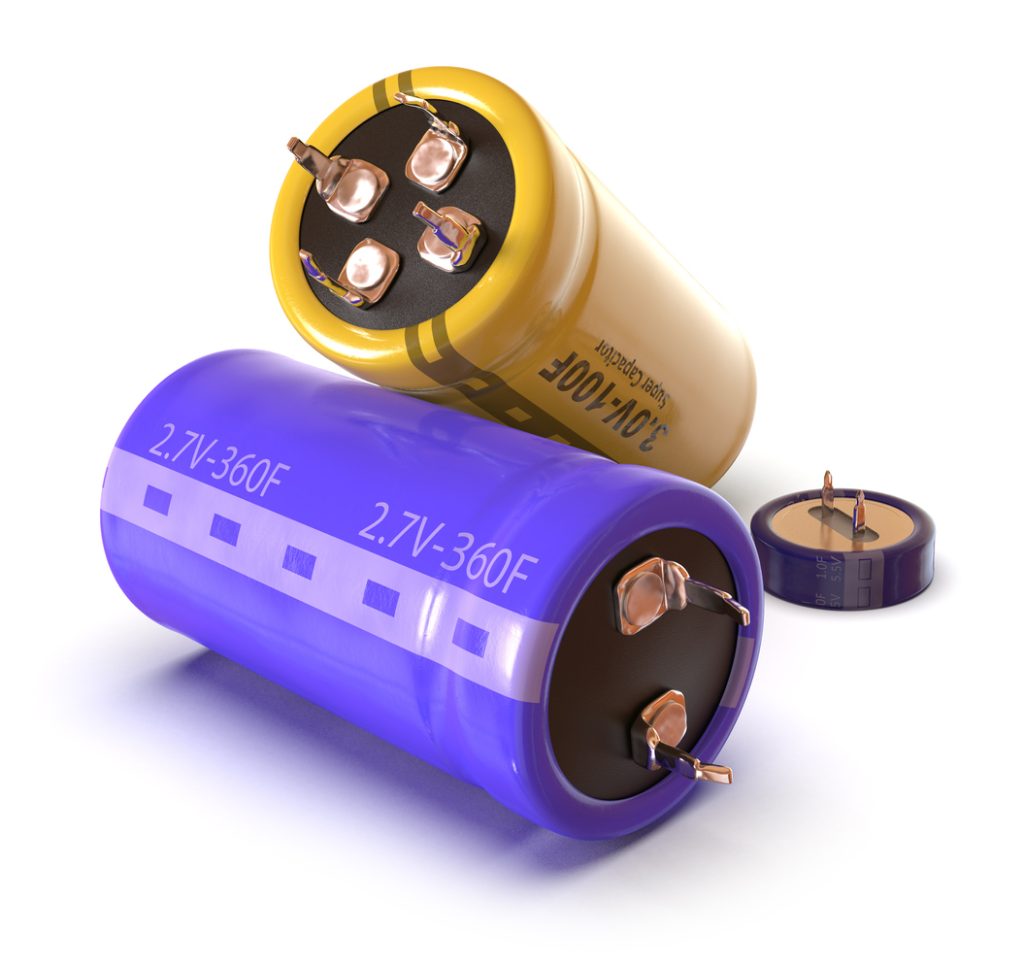
Supercapacitors (SCs) are promising electrochemical energy storage systems that can be charged/discharged quickly (in second/sub-second timescale) over millions of re-charge cycles, while retaining their electrochemical performances.
They are mainly categorized in electrochemical double-layer capacitors and pseudocapacitors. The first ones rely on electric double-layer formation via ion adsorption and swapping of co-ions for counter-ions at electrode/electrolyte interface, while the latter mainly store electrical energy via Faradaic electron charge-transfer with redox reactions, electrosorption or battery-like intercalation processes.
Applications
Nowadays, SCs found applications in the automotive sectors, for which is expected a global billion € market at the end of this decade. The increasing investments in the renewable energies and related smart grids, the electrification of railway trains and trams, and e-mobility via electric, shared and autonomous vehicles (robo-taxis, shuttles and buses) will heavily promote the adoption of SCs as best solution for daily life needs.
To express the full potential of SCs, electrode materials must be nanostructured and engineering through physical/chemical functionalization, aiming at maximising the electrochemically accessible surface area to reach high energy density, while controlling the quantum capacitance of carbonaceous materials and even introducing novel storage mechanisms based on Faradaic reactions. In this context, layered two-dimensional (2D) materials, in particular graphene, exhibit a high surface-to-volume ratio coupled with excellent electrical conductivity and excellent mechanical properties (e.g., flexibility), offering an ideal material platform to realize advanced SC electrodes.
Our Solutions
Here at BeDimensional, we have developed advanced electrode formulation based on high-purity few-layer graphene. We showed that the management of the nanotribological properties of both active materials and electrolytes can be a new paradigm to overcome the classic dichotomy of energy density and power density in SCs. By conceiving an efficient ion transport within high-surface area electrodes, electrolyte ions can access into both meso- and micro-pores.
This feature is mandatory to reach rate-independent high energy densities, the ultimate goal of SC technology. Thanks to their high-purity grade, our few-layer graphene flakes act as friction-free “ion slides” for SC electrolytes. Such an intriguing feature allows us to boost the electrochemical performance of commercial-like SCs by incorporating few-layer graphene into activated carbon films with high mass loading.